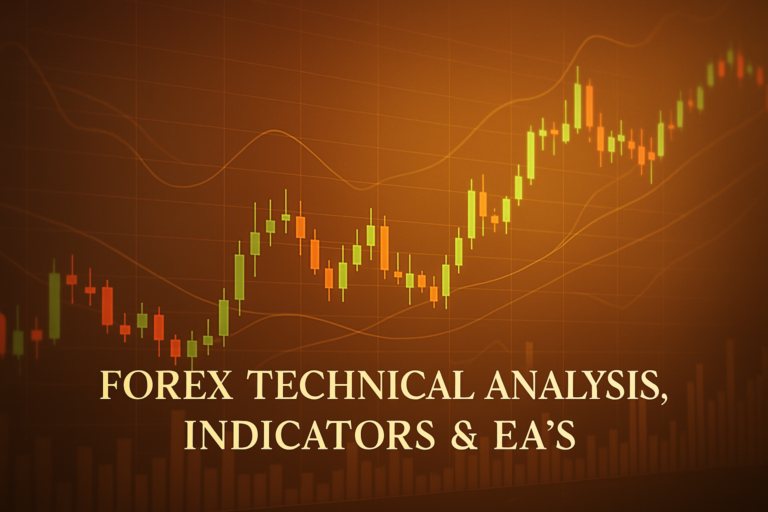
Discover the benefits of the centered moving average for effective Forex trading strategies.
The centered moving average is a crucial tool in Forex trading. It helps traders understand price trends and make informed decisions. By calculating the average of prices over a specific period, this method provides a clearer view of market movements. This clarity is vital for both beginners and experienced traders.
However, many traders struggle with the centered moving average. Beginners may find it confusing, while professionals sometimes overlook its benefits. Understanding this tool is essential for maximizing trading profits. When applied correctly, it can help in identifying trends and making strategic decisions.
This article will explore the centered moving average in detail, discussing what it is, its history, advantages and disadvantages, and various strategies for application.
If you’re looking for more insights to enhance your trading journey, check out our article on forex trading account insights.
What is a Centered Moving Average?
What is a centered moving average?
A centered moving average is a type of average used in trading. It calculates the average price of a currency pair over a set number of periods. Imagine you’re looking at the last 10 days of prices. The centered moving average takes these prices and finds the average, placing it in the middle of that range. This helps smooth out the price movements and gives a clearer picture of market trends.
Types of Centered Moving Average
There are several types of centered moving averages. The most common ones include:
- Simple Moving Average (SMA): The simplest form, it averages all closing prices equally.
- Exponential Moving Average (EMA): This gives more weight to recent prices, making it more responsive to changes.
- Weighted Moving Average (WMA): Similar to EMA, but with a different weighting method.
How Centered Moving Average Smooths Out Price Action
The centered moving average smooths out price action by reducing noise in the data. This means that sudden price spikes or drops do not affect the overall trend as much. For example, if a currency pair suddenly rises due to a news event, the centered moving average will help you see the underlying trend instead of just that spike.
Common Periods Used and Why
Traders often use different periods for centered moving averages, such as 10, 20, or 50 days. A shorter period will react quickly to price changes, while a longer period will provide a more stable view. For instance, a 10-day centered moving average will show more immediate trends, while a 50-day average gives a broader perspective.
The History of Centered Moving Average: How It Became Popular
Origin of Centered Moving Average
The centered moving average was created to help traders make sense of price data. It emerged in the early days of technical analysis. Traders needed a method to filter out noise and identify patterns effectively. Over time, it became a staple in trading strategies.
When Did Traders Start Using It Widely?
Real-Life Stories
Many professional traders have credited the centered moving average for their success. For example, a trader might have used a centered moving average to identify a strong upward trend, leading to significant profits. These stories inspire new traders to explore this powerful tool.
Advantages and Disadvantages of Centered Moving Average
Advantages:
Here are some key advantages of using a centered moving average:
- Helps Identify Trends Easily: By smoothing out price fluctuations, it becomes easier to spot trends.
- Useful for Dynamic Support and Resistance: Traders can use it to identify potential support or resistance levels.
- Works Well for Crossover Strategies: Traders can use it effectively in crossover strategies, where two moving averages intersect.
Disadvantages:
However, there are also some disadvantages:
- lags Behind Price Movements: The centered moving average reacts to price changes with a delay, which can lead to missed opportunities.
- Can Give False Signals in Sideways Markets: In a non-trending market, it may produce misleading signals, making it hard to trade.
How to Apply Centered Moving Average on MT4 & MT5
Step-by-Step Guide to Adding Centered Moving Average on Charts
To add a centered moving average on your MT4 or MT5 charts, first, open your trading platform. Then, select the ‘Insert’ menu, hover over ‘Indicators,’ and choose ‘Trend.’ From there, select ‘Moving Average.’ You can then set the type to ‘Centered.’
Customizing Centered Moving Average Settings
You can customize the centered moving average settings to fit your trading style. Choose the period you want to use, select the color for visibility, and pick the type of moving average you prefer, such as simple or exponential.
Saving Templates for Easy Application
Once you have your centered moving average set up, save it as a template. This way, next time you open a chart, you can apply your settings instantly. Just right-click on the chart, select ‘Template,’ and then ‘Save Template.’
5 to 7 Trading Strategies Using Only Centered Moving Average
1. All Time Frame Strategy (M5 to D1)
This strategy works across various time frames. Traders use a centered moving average to identify trends. When the price is above the average, it indicates a buy opportunity, while below suggests selling.
2. Trending Strategies
In trending markets, a centered moving average can help confirm the trend’s direction. If the price consistently stays above the average, it’s a strong signal to buy.
3. Counter Trade Strategies
For counter-trend trading, use the centered moving average to spot potential reversals. If the price moves far from the average, it might signal a correction.
4. Swing Trades Strategies
Utilize the centered moving average to identify swing trading opportunities. Traders can enter trades when the price moves toward the average and then rebounds.
5 to 7 Trading Strategies Combining Centered Moving Average with Other Indicators
1. All Time Frame Strategy (M5 to D1) with RSI
This strategy combines the centered moving average with the Relative Strength Index (RSI). When the price is above the average and the RSI indicates oversold conditions, it’s a buy signal.
2. Trending Strategies with MACD
By pairing the centered moving average with the MACD, traders can confirm trends. If both indicators align in the same direction, it strengthens the trade.
3. Counter Trade Strategies with Stochastic Oscillator
Use the centered moving average alongside the Stochastic Oscillator to find counter-trend opportunities. A divergence between these tools can indicate a reversal.
4. Swing Trades Strategies with Bollinger Bands
When combined with Bollinger Bands, the centered moving average can help traders spot swing trades. A price touching the upper band while above the average may signal a sell opportunity.
If you’re interested in understanding more about trading concepts, check out our guide on forex foreign exchange.
Top 10 FAQs About Centered Moving Average
1. What is a centered moving average?
A centered moving average is an average that smooths out price data to help traders identify trends more clearly.
2. How is it different from a simple moving average?
The centered moving average places the average in the middle of the data range, while a simple moving average does not.
3. Can I use it for day trading?
Yes, many day traders use centered moving averages to identify quick trends and make fast decisions.
4. What periods are best for centered moving averages?
Common periods include 10, 20, and 50 days, but it depends on your trading style and goals.
5. How do I know when to buy or sell?
Buy when the price is above the centered moving average and sell when it is below.
6. Is it effective in volatile markets?
In volatile markets, it may lag, but it provides a clearer trend direction overall.
7. Can I combine it with other indicators?
Absolutely! Combining with indicators like RSI or MACD can enhance your trading signals.
8. How do I customize it on trading platforms?
You can customize the period, color, and type of moving average in the settings of your trading platform.
9. What are the limitations?
It may lag behind price movements and give false signals in sideways markets.
10. Should I use it alone?
While effective, it’s best to combine it with other tools for more reliable trading decisions.
Conclusion
In summary, the centered moving average is a valuable tool for traders. It helps identify trends, supports decision-making, and can be combined with various strategies. Remember to test different strategies before risking real money to find what works best for you.
Use the centered moving average wisely, and it could significantly improve your trading results. Happy trading!
Stay ahead of the game by reading expert-backed advice on this topic FX Empire, International Monetary Fund
Expand Your Knowledge
- 📌 Forex Trading Learning Road Map
- 📌 Forex Trading Course with no Fees
- 📌 Forex Trading Issues, Problems, and Solutions
- 📌 Forex Daily Forecast & Live Updates
- 📌 Forex Fundamental & News Analysis: Tomorrow’s Market Movers & Trade Opportunities
- 📌 Forex Education Hub: Learn & Profit
- 📌 Forex Technical Analysis, Indicators & EA’s
Start Trading Today
Ready to take your forex trading to the next level? Open an account with Exness, one of the most trusted platforms in the industry. 👉 Sign Up Now and trade with confidence!
My recommended broker stands out with ultra-low spreads for beginners, instant withdrawals, and zero spread accounts for pro traders.
Trusted since 2008, lightning-fast execution, no hidden fees, and a secure, transparent trading environment—giving you the edge you need to succeed. 🚀
Watch this helpful video to better understand centered moving average:
Note: The video above is embedded from YouTube and is the property of its original creator. We do not own or take responsibility for the content or opinions expressed in the video.
The Moving Average Angle Forex Trading strategy is a powerful tool available for download from Adda’s Markets Indicators Gallery. This strategy focuses on trading long-term trends in the Forex market, allowing traders to make more profits with fewer trades. To implement this strategy, two key indicators are utilized: the 200 Exponential Moving Average (EMA) and the MA Angle Indicator. The primary goal is to identify long-term trend changes and maintain trades for extended periods, making it particularly suitable for traders who prefer to hold long-term positions. The 200 EMA is popular among traders for various reasons, including trend identification and determining the price’s position relative to the moving average. Additionally, multiple moving averages can be employed to identify entry points, such as when the price reaches the moving average.
The MA Angle Indicator plays a crucial role by measuring the slope of the moving average, with steeper slopes indicating stronger trends. The MA Angle Indicator is represented as a histogram, where the color of the bars denotes the trend direction—red for downtrends, green for uptrends, and yellow for flat trends. This indicator can be utilized as a filter for trend trading strategies or as a signal to enter the market. For example, when a green or red bar appears after a yellow one, traders may execute buy or sell orders, respectively. The strategy is designed for various time frames, from one minute to daily charts, enabling traders to adapt their approach based on their preferences. By focusing on long-term trends and efficiently trading the market, traders can maximize profits while minimizing the number of trades.
Incorporating a practical forex trading example can help illustrate how this strategy works in real-world scenarios. For instance, a trader might observe that the price crosses above the 200 EMA, signaling a potential uptrend. By confirming this with the MA Angle Indicator, which shows a steep slope, the trader would enter a buy position and hold it as long as the trend remains strong. By using this method, traders can capitalize on long-term market shifts and enhance their trading effectiveness. Overall, the Moving Average Angle strategy offers a systematic approach to Forex trading that caters to both beginner and experienced traders seeking to improve their market performance.



